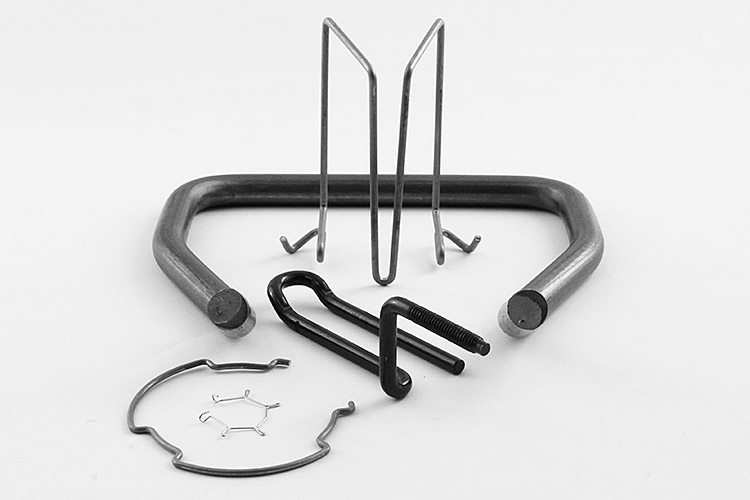Get unique, complex parts easily. No matter your requirements, Chaoyi Spring creates hard-to-produce coil springs and wire forms.
Let us help you create the custom wire form you need, from S-hooks and J-hooks to utility hooks and more.
We work closely with customers across a wide range of industries, helping them design and manufacture made-to-order parts.
Why choose Chaoyi Spring? We prioritize customer-focused collaboration, modern equipment and the latest technology to make your parts per print.
Find the information and guidance you need, from measuring a spring to learning about materials, placing an order and much more.
Tension springs, also known as extension springs, are essential components in countless mechanical systems. They provide a resilient force to return a moving part to its original position, acting as


Tension springs, also known as extension springs, are essential components in countless mechanical systems. They provide a resilient force to return a moving part to its original position, acting as a counterbalance or a source of energy. Selecting the right tension spring for your application hinges on understanding various factors, including its size, material, and operating conditions. This article will delve into the intricate world of tension springs by size, offering a comprehensive guide to help you navigate this crucial aspect of mechanical design.

Tension springs are characterized by their unique dimensions, which play a critical role in determining their performance. The primary size parameters include:
These size parameters are interconnected and must be carefully considered during the selection process. A larger wire diameter will result in a stronger spring, while a larger mean coil diameter will lead to a more flexible spring. The free length and solid length define the spring's operating range, while the number of coils impacts the spring's stiffness and load-carrying capacity.
Selecting the right tension spring size involves a careful assessment of the application's requirements. The primary factors to consider include:
For example, a tension spring used in a door hinge might require a relatively low load capacity and moderate stiffness, while a spring used in a heavy-duty machine might need a high load capacity and a stiffer spring. The operating environment could also factor into the selection, for example, if a spring is used outdoors, it might need a corrosion-resistant coating.
In addition to size, the material and coating of the tension spring significantly impact its performance and lifespan. Common spring materials include:
Coatings can further enhance the spring's performance and longevity. Common coatings include:
The choice of material and coating depends heavily on the specific requirements of the application. For example, a spring used in a harsh environment may benefit from a stainless steel construction and a corrosion-resistant coating, while a spring in a less demanding application might suffice with carbon steel and zinc plating.
Tension springs find applications across diverse industries and mechanical systems. Some common examples include:
The size of the tension spring will vary based on the specific application. For instance, a spring used in a door hinge will be much smaller than a spring used to balance a heavy garage door. The selection of the spring size is critical to ensure that the spring functions properly and provides the desired level of performance.
Understanding tension springs by size is a critical aspect of selecting the right component for your mechanical system. By carefully considering factors like wire diameter, mean coil diameter, free length, solid length, number of coils, material, and coating, you can ensure that the spring meets your specific application requirements. Tension springs are versatile and reliable components found in countless applications, and by choosing the right size and configuration, you can optimize your system's performance and longevity.
Ultimately, selecting the right tension spring size is a multifaceted process that requires a thorough understanding of the application's requirements and the properties of different spring materials and coatings. By taking a comprehensive approach, you can ensure that the spring performs reliably and effectively, contributing to the overall success of your mechanical system. If you have any doubts or need further assistance, consulting a spring manufacturer or experienced engineer is always recommended to guide you through the selection process and ensure optimal performance for your specific application.
Browse some of the custom wire forms and springs that we manufacture. Don’t see what you need? We specialize in made-to-order products that meet your application requirements.
Visit Our GalleryNeed a custom wire form or coil spring? We make it work. Fill out the contact form and a representative will respond within 1 business day. If you have a PDF or CAD file, you can submit to request a quote.